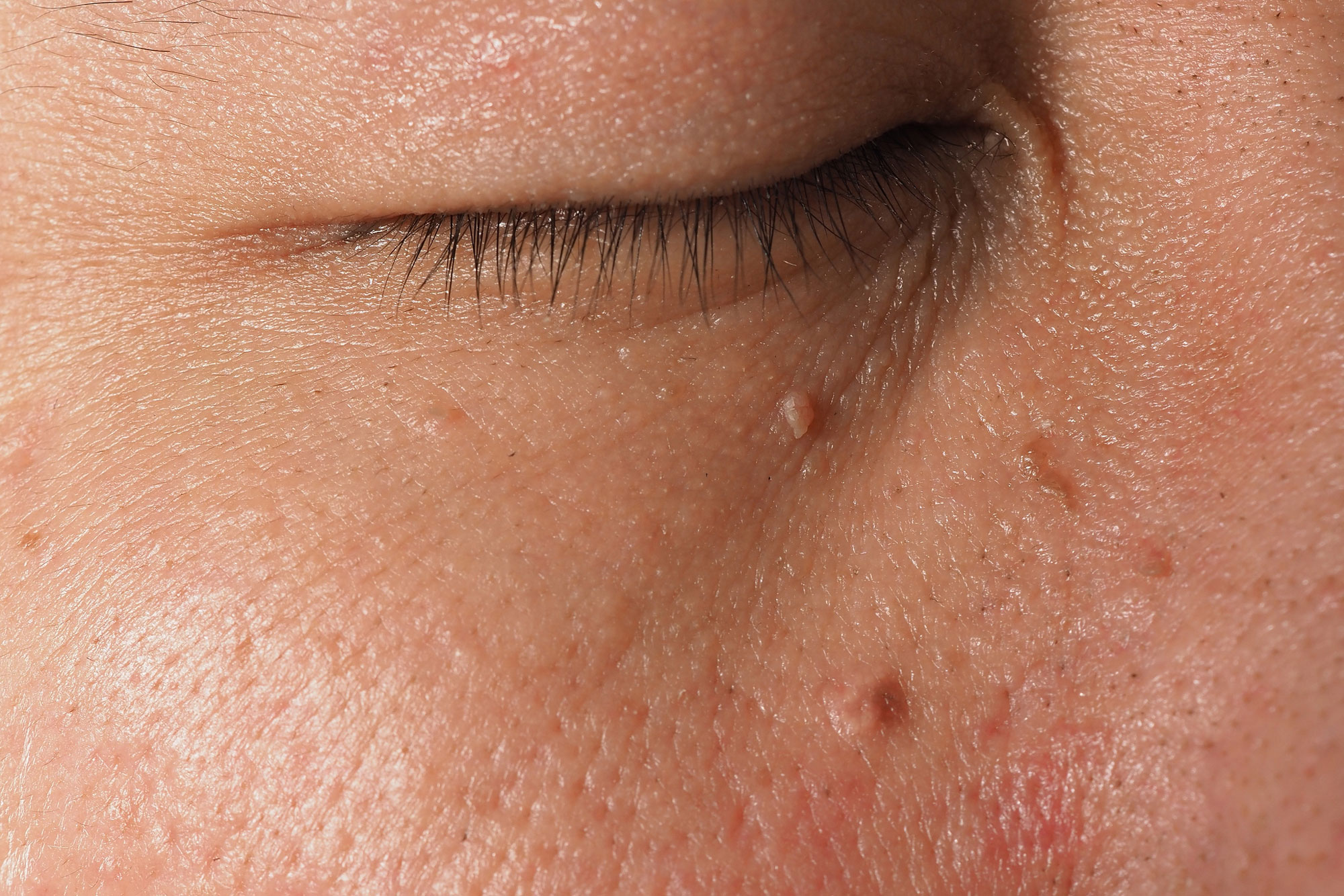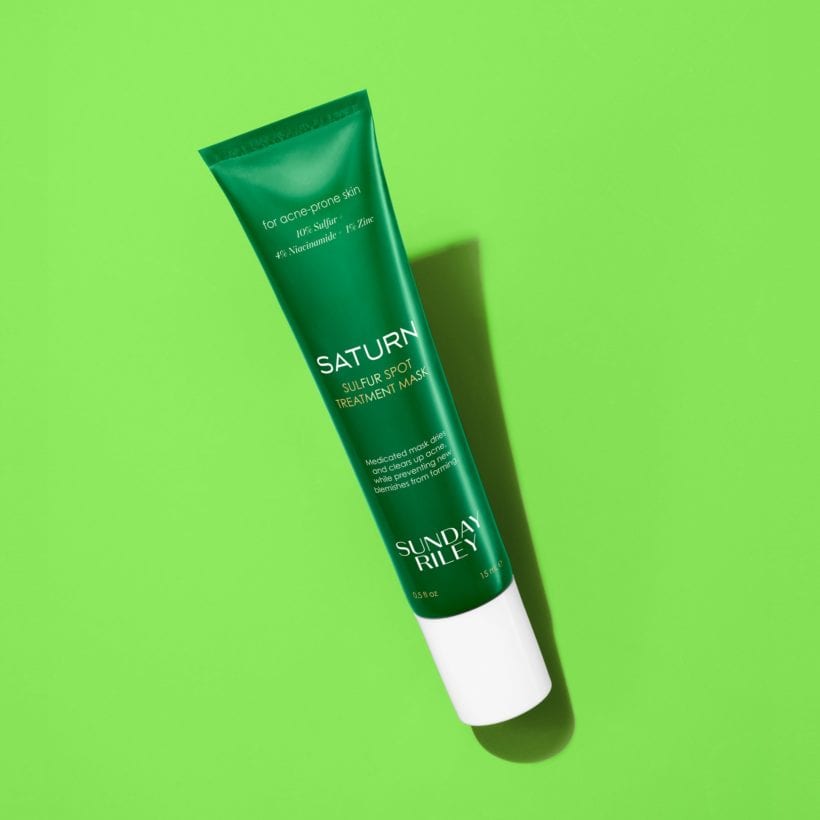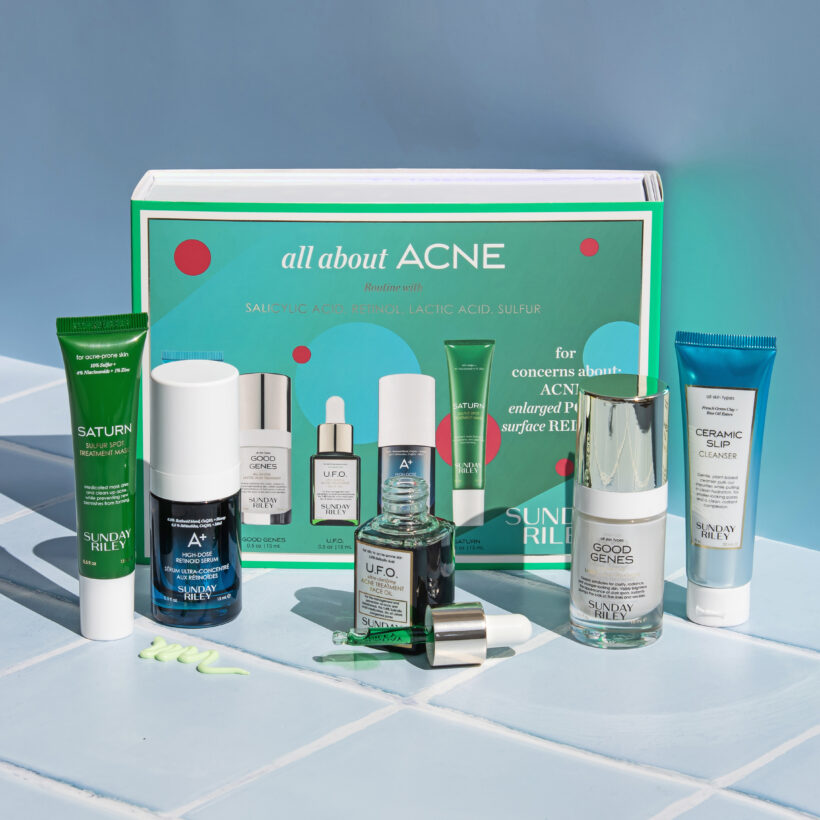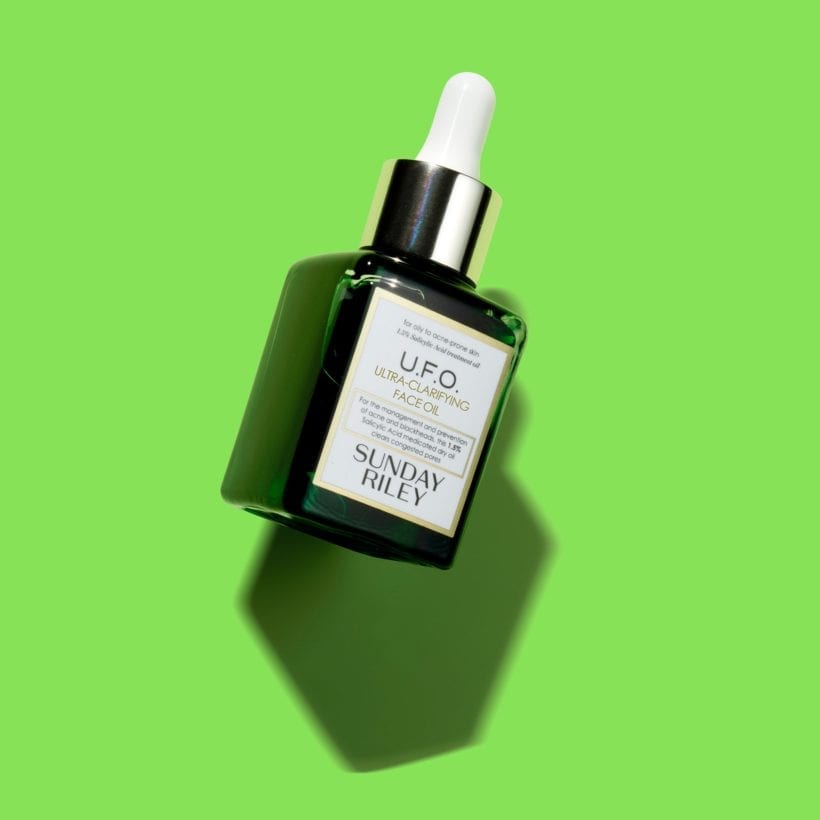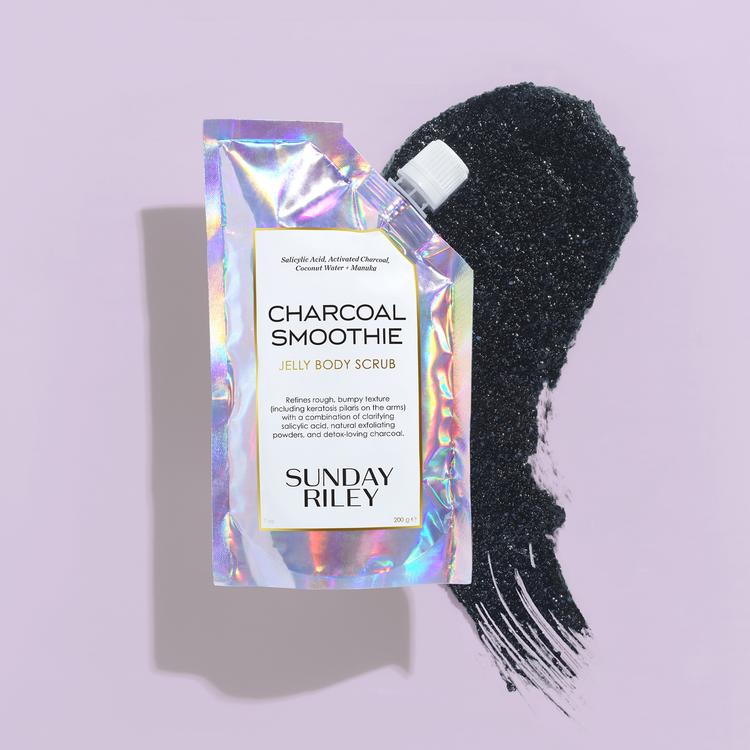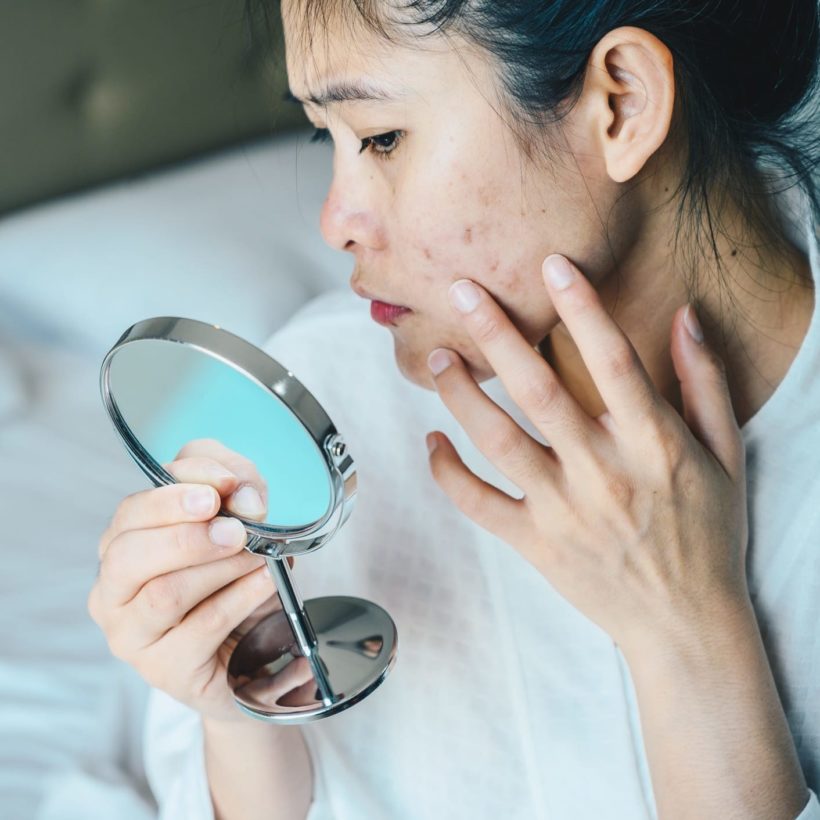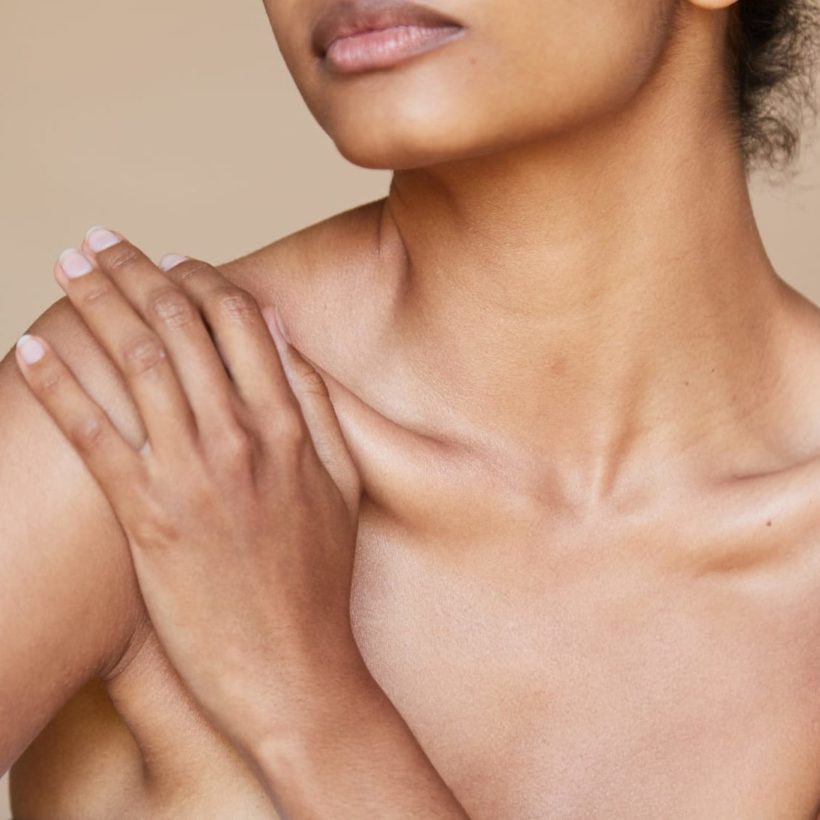Despite what you see in photoshopped images of models in magazines and filtered social media selfies of celebs, no one has perfectly smooth skin — and that’s normal. “Our skin is simply not smooth like a wall, but rather it contains numerous appendages, such as hair follicles, sweat ducts, oil glands, muscles attached to each hair follicle, etc.,” says Erum Ilyas, M.D., a dermatologist at Schweiger Dermatology. “Each of these structures plays an overall role in how the skin functions as an organ and also impacts how the skin feels.”
Skin bumps are normal, and most of them are harmless. That said, they can be pretty tempting to pick at your skin, whether it’s the occasional pimple or as a response to boredom and stress. But, any dermatologist will tell you that popping anything on your precious face is almost always a bad idea. Despite the temptation, the best course of action is to leave bumps alone, treat them with an over-the-counter solution, whether a cleanser, mask, or spot treatment, and see a board-certified dermatologist should anything look suspicious.

Meet the Experts
Erum Ilyas, M.D. is a dermatologist at Schweiger Dermatology in King of Prussia, Pennsylvania.
Brendan Camp, M.D. is a Manhattan-based dermatologist at MDCS Dermatology.
Marisa Garshick, M.D. is a dermatologist at Medical Dermatology & Cosmetic Surgery in NYC.
As a general rule of thumb, there’s not a good instance where we (or a derm!) would recommend picking at your skin. There are a few instances where it’s especially important not to poke or prod — here’s why.
Pimples
You probably know that you should avoid popping your pimples at all costs, but there’s no denying that it’s incredibly tempting to want to try and pop a white head that’s staring back at you in the mirror. The reason why it’s best to leave pimples alone is that touching them in any way can cause inflammation that then triggers discoloration and potentially scarring, which can be permanent, explains Brendan Camp, M.D., a Manhattan-based dermatologist at MDCS Dermatology.
Solution: If you tend to pick at your acne, Dr. Camp recommends using a hydrocolloid acne patch instead, which may help shrink the pimple and prevent you from scratching it. Or, try out the Sunday Riley All About Acne Kit that features five best-sellers for calming and clearing up acne and stars our U.F.O. Ultra-Clarifying Face Oil and Saturn Sulfur Spot Treatment to combat congested skin.
Lipoma
These very common skin growths are thankfully benign and often appear the same color as your skin. They can range in size and tend to be slow-growing, notes Deanne Mraz Robinson, M.D., a dermatologist with Modern Dermatology of Connecticut. “They are a cluster of fatty tissue situated between your skin and muscle layer, which is deep in the skin structure, so they shouldn’t be picked at, especially at home,” she says.
Solution: If they’re bothersome, you can visit your board-certified dermatologist, who can surgically remove them if they are painful or aesthetically unpleasant.

Skin Tag
Similar to a lipoma, skin tags are typically the same color as your skin or slightly darker and resemble a raised mole, according to Dr. Robinson. “Skin tags occur when extra skin cells grow in the top layers of the skin and are common with pregnancy when hormones speed up growth, and in overweight people in the folds of skin where there is skin-on-skin contact,” she says. “These cannot be popped, as nothing is inside, and any at-home picking and prodding will lead to scarring.”
Solution: Skin tags are harmless, but if their appearance troubles you (say, it gets in the way of shaving or you just want them removed), visit your board-certified dermatologist who can remove them with cryotherapy or surgery.
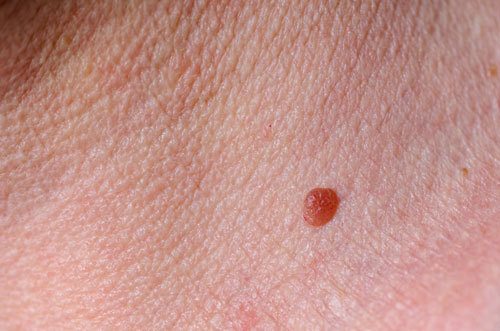
Milia
Milia can be tricky because they can present just like a whitehead, making them desirable for popping. In reality, however, they are firm, white papules that cannot be popped. Attempting to do so will only irritate your skin. “Milia are often seen around the cheeks and eyelids and require the removal of a professional,” says Dr. Camp. “Trying to pop them could increase the risk of an infection or lead to hyperpigmentation.”
Solution: Most cases of milia should go away on their own over time. But, if it takes longer than a few weeks or months, your derm might suggest a more powerful retinoid or a quick in-office procedure like cryotherapy or laser surgery.
Cyst
As tempting as it may be, these keratin-filled sacs should not be popped, warns Marisa Garshick, M.D., a dermatologist at Medical Dermatology & Cosmetic Surgery. “While popping a cyst may help reduce its size temporarily by eliminating the contents, it may just fill back up,” she says. “Additionally, squeezing or popping can trigger more inflammation, leading to redness and potentially an increased size.”
Solution: See your board-certified dermatologist to determine the best steps for management, which may include an excision to completely remove the sac or a steroid injection if it is inflamed.
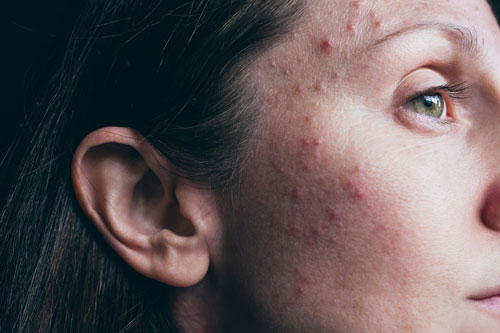
Keratosis pilaris
Also known as “chicken skin,” keratosis pilaris can cause small bumps on the upper arms or legs that feel rough on the skin, explains Dr. Garshick. It’s a genetic skin condition where the hair follicles create a tiny plug of keratin, so it appears inflamed and bumpy. While they aren’t harmful, she warns against popping or squeezing them in any way, as doing so can lead to scarring and further irritation.
Solution: “It is best to treat keratosis pilaris with a gentle exfoliator that helps eliminate dead skin cells while also softening the skin,” says Dr. Garshick. Sunday Riley Charcoal Smoothie Jelly Body Scrub contains salicylic acid, niacinamide, charcoal, and natural exfoliating powders that target flaky, bumpy skin. Dry air and heat can worsen keratosis pilaris, so keeping the skin hydrated is key.
We only recommend products we have independently researched, tested, and loved. If you purchase a product found through our links, Sunday Edit may earn an affiliate commission.
